Lesson 107~108
✨课文

✨单词
比较级和最高级
⚡本课重点
形容词的比较级和最高级:以er结尾的形容词属于「比较级」,而以est结尾的形容词属于「最高级」
其变化规则如下
①一般情况下,单音节形容词的词尾直接加
er/este.g. small => smaller => smallest、new => newer => newest
②以
e结尾的形容词,直接在词尾加r/ste.g. nice => nicer => nicest、large => larger => largest
③以辅音字母加
y结尾的形容词,将y改为i,再加er/este.g. easy => easier => easiest、heavy => heavier => heaviest
④当单音节形容词只有一个元音字母,并且以一个辅音字母结尾时(往往以重读闭音节的形式出现,即
辅元辅),先双写词尾辅音字母再加er/este.g. big => bigger => biggest、thin => thinner => thinnest
⑤不规则变化
e.g. good/well => better => best、bad/ill => worse => worst、little => less => least、many/much => more => most
⑥大多数较长的形容词(即有两个以上音节的词)可与
more/less连用构成比较级,与most/least连用构成最高级e.g. She's more beautiful than her sister.、She's the most beautiful in her class.
用法:
比较级只用于两者之间,通常与
than连用,结构为主语+be+adj.er+than+比较对象。如果所指代事物很明确,也可以独立存在e.g. He's taller than his father.、I haven't got a larger dress.
最高级用于三者或以上的情况,在使用时必须加定冠词
the,并常伴有一个表示范围的介词短语或从句,其常见结构如下主语+be+the+adj.est(+n.)+范围e.g. That girl is the tallest student in our class.
主语+be+the+adj.est(+n.)+I've ever V.pp.e.g. This is the craziest thing I've ever done.
排除自己:使用
othere.g. He's taller than any other students in his class.、Shanghai is larger than other cities in China.
would:will的过去式,表示「愿意」。常常与like连用构成would like,缩写形式为'd like
would like+n.:愿意尝试某物/事e.g. I would like some tea. = I'd like some tea.
would like+to do sth.:愿意做某事e.g. I would like to help him.
Lesson 109~110
✨课文

✨单词
⚡本课重点
不可数名词的多与少,用much和little来表达;可数名词的多与少,用many和few来表达。在之前的79~80课中学习了much和many的用法,本节课来学习little和few
little:单词本义为「一点、少许」
a little+un.:表示肯定含义,即剩余的数量刚好够完成接下来要做的事e.g. There is a little milk in the fridge. You can drink that.、They have a little money, so they're not very poor.
little+un.:表示否定含义,即剩余的数量不足以完成接下来要做的事e.g. There is little milk in the fridge. We need to buy some.、They have little money. They're very poor.
few:单词本义为「几个」
a few+cn.:表示肯定含义e.g. There are a few apples in the basket.、I've got a few friends, so I'm not lonely.
few+cn.:表示否定含义e.g. There are few apples in the basket. It's nearly empty.、I've got few friends. I'm sad and lonely.
had better do sth.:最好做某事
advice sb. to do sth.:建议某人做某事
Lesson 111~112
✨课文

✨单词
⚡本课重点
形容词的比较形式有三种
较高比较级:
more adj.,表示「比...更」。the most adj.,表示「最...」e.g. She's more beautiful than her sister.、He's the most intelligent in his class.
较低比较级:
less adj.,表示「更少...」,但通常为了翻译时信达雅,更通俗的意思是「不如、不及」。the least adj.,也表示「最...」,但意思是反向的最e.g. She's less beautiful than her sister.、He's the least intelligent in his class.
平级比较级:
as adj. as,表示「和...一样」e.g. She is as tall as her mother.
总结
| 结构 | 含义 | 例句 | |
|---|---|---|---|
| A = B | as adj. as | 和...一样 | She is as tall as her mother. |
| A > B | adj.er than | 比... | She looks younger than her sister. |
more adj. than | 比...更 | She's more beautiful than her sister. | |
| A < B | not as/so adj. as | 不如、不及 | She looks not as young as her sister. She looks not so young as her sister. |
less adj. than | She's less beautiful than her sister. | ||
| 三者或以上 | the adj.est 范围/从句 | 最... | He's the tallest in his class. |
the most/least adj. 范围/从句 | He's the most intelligent in his class. | ||
| He's the least intelligent in his class. | |||
adj.er and adj.er | 越来越... | She is becoming more and more beautiful. | |
the adj.er, the adj.er | 越...,越... | The more careful you are, the fewer mistakes you would make. | |
one of the adj.est | 最...之一 | Mr. Lee is one of the most popular teachers in our school. |
Lesson 113~114
✨课文
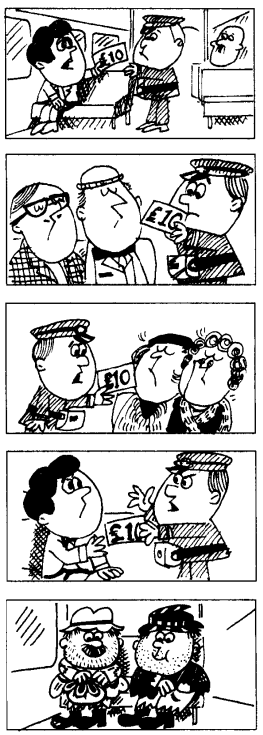
✨单词
⚡本课重点
not、no、none之间的关系
not+any/a/an等价于no+n.,看如下例子- I didn't see any cars in the street. = I saw no cars in the street.
- There aren't any books on the shelves. = There are no books on the shelves.
- I haven't got any time. = I've got no time.
- I haven't got any money. = I've got no money.
no+n.等价于none。注意,none本身表示「一无所有」,使用时要结合上下文才能知道none指代什么,尽量不要单独使用。看如下例子- We haven't got any beer. = We've got no beer. => We've got none.
- There aren't any students. = There are no students. => There are none.
so和neither:以so或neither开头的简短回答,必须用倒装句式。使用时注意如下三点
时态一致,人称一致
肯定:
so+助动词/情态动词/be+主语e.g. I like ice cream. => So do I、
否定:
neither+助动词/情态动词/be+主语e.g. I don't want to work. => Neither do I.
Lesson 115~116
✨课文

✨单词
不定代词
⚡本课重点
not anyone 等价于 no one
e.g. There isn't anyone in the room. = There is no one in the room.
not anybody 等价于 nobody
e.g. There isn't anybody in the room. = There is nobody in the room.
not anything 等价于 nothing
e.g. There isn't anything in the bag. = There is nothing in the bag.
not anywhere 等价于 nowhere
e.g. I didn't go anywhere. = I went nowhere.
规律
- 动词否定形式+
anyone/anybody/anything/anywhere - 动词肯定形式+
no one/nobody/nothing/nowhere
Lesson 117~118
✨课文

✨单词
过去进行时
⚡本课重点
过去进行时:动作发生的时间是「过去」,动作的状态是「进行中」。核心结构是 was/were+V.ing,其中助动词be表示动作发生的时间,实义动词V.ing表示动作的状态
肯定句:表示过去某个时间正在进行或者发生的动作、状态。
主语+was/were+V.ing(+其他)e.g. He was watching TV at 8 o'clock last night.
否定句:只需在
be的后面加上not即可。主语+was/were+not+V.ing(+其他)e.g. He wasn't watching TV at 8 o'clock last night.
一般疑问句:只需将
be提到句首(主语前面)即可。Was/Were+主语+V.ing(+其他)e.g. Was he watching TV at 8 o'clock last night?
特殊疑问句:在一般疑问句的句首加上特殊疑问词并去掉答案。
特殊疑问词+was/were+主语+V.ing(+其他)e.g. He was watching TV at 8 o'clock last night. => Was he watching TV at 8 o'clock last night? => What was he doing at 8 o'clock last night?
先把陈述句中的
be动词提到句首得到一般疑问句,再用what对一般疑问句中的答案watching TV进行提问,并将what提到句首
时间状语:表某个动作或完成对应的时间。在上面的例子中,at 8 o'clock last night就是时间状语,其目的是交代实义动词watching所发生的时间
时间状语从句:用一个句子来充当时间状语
由when、while、just as引导的时间状语从句
when:可以引导一般过去时、过去进行时、过去完成时。表示「当...的时候」
- 一般过去时
when+V.ed:It was raining very heavily when I got off the train. - 一般过去时
when+was/were n./adj.:I had known him when I was a student. - 过去进行时
when+was/were V.ing:When I was sleeping my friend phoned me. - 过去完成时
when+had V.pp.:They went home when they had spent all their money.
- 一般过去时
while:通常只会引导过去进行时,但也存在一般过去时的可能,只是很少见。表示「在...的时候(强调两个动作的同时进行)」
- 过去进行时
while+was/were V.ing:While I was cooking the dinner, he was working in the room.
- 过去进行时
just as:引导过去进行时,表示「正当...的时候」
- 过去进行时
just as+was/were V.ing:The telephone rang just as I was opening the door.
- 过去进行时
Lesson 119~120
✨课文

✨单词
过去完成时
⚡本课重点
过去完成时:动作发生的时间是「过去」,动作的状态是「完成」。核心结构是 had+V.pp.,其中助动词had表示动作发生的时间,过去分词表示动作的状态。强调过去某一动作发生在另一个动作或状态之前(过去的过去)。它经常与after和before连用
肯定句:表示过去某个时间之前已经完成的动作、状态。
主语+had+V.pp.(+其他)e.g. He had swallowed the coins.
否定句:直接在
had的后面加上not即可。主语+had+not+V.pp.(+其他)e.g. He hadn't swallowed the coins.
一般疑问句:只需将
had提到句首(主语前面)即可。Had+主语+V.pp.(+其他)e.g. Had he swallowed the coins?
特殊疑问句:在一般疑问句的句首加上特殊疑问词并去掉答案。
特殊疑问词+had+主语+V.pp.(+其他)e.g. He had swallowed the coins. => Had he swallowed the coins? => What had he swallowed?
先把陈述句中的
had动词提到句首得到一般疑问句,再用what对一般疑问句中的答案the coins进行提问,并将what提到句首
与after连用:after A, B等价于B after A,都表示「先A后B」。后发生的动作往往是一般过去时
after A, B:动作A完成之后再进行动作B
e.g. After I had watched the television, I had a bath.
B after A:动作A完成之后再进行动作B
e.g. I had a bath after I had watched the television.
与before连用:before B, A等价于A before B,都表示「A在B之前」。后发生的动作往往是一般过去时
before B, A:在进行动作B之前发生了动作A
e.g. Before I had a bath, I had watched the television.
A before B:在进行动作B之前发生了动作A
e.g. I had watched the television before I had a bath.
Lesson 121~122
✨课文

✨单词
定语从句
⚡本课重点
定语从句是一个相对较难的知识点,本节课主要先从汉语的角度来理解并构造定语从句
定语:参考基础概念中的定语。类似于汉语中对某种东西进行修饰限定,什么什么的就是一种定语,比如漂亮的女孩
关系代词:who、whom、whose、that、which
- 连接主句和从句,充当连接词
- 在从句中做句子成分,指代主语或宾语
who:用于指代人,进一步提供有关某人的信息。侧重于在从句中作主语whom:与who同义,作为动词或介词的宾语。只能在从句中作宾语whose:用于指代人或物,进一步提供信息时使用。侧重于在从句中作定语that:用于指代人或物,可以在从句中作主语、宾语或表语,只能引导限定性定语从句which:用于指代人以外的物,包括有生命或无生命的东西。可以在从句中作主语或宾语
定义从句:用一个句子来充当定语,去修饰限定另一个句子(主句)的中心词。被修饰限定的成分(名词/代词)叫先行词。先行词总是放在定语从句的前面,所以叫先行词
修饰人:关系代词用
who/whom/that。当先行词在从句中作主语时,只能用who或that;而作宾语时,可以用who、whom或that,甚至省略。在生活中,实际上人们更多是用whoe.g. 他就是昨天打电话给我的那个人
- ①分析句子可知,从句中「
昨天打电话给我的」修饰限定「那个人」 - ②根据分析结果将这句中文拆分成两个部分,He is the man. 和 The man called me yesterday.
- ③由于先行词
the man在从句中作主语,所以关系代词只能用who或that,且不能省略 - ④最后得到完整句子 He is the man who called me yesterday.
e.g. 他就是我昨天遇到的那个人
- ①分析句子可知,从句中「
我昨天遇到的」修饰限定「那个人」 - ②根据分析结果将这句中文拆分成两个部分,He is the man. 和 I met the man yesterday.
- ③由于先行词
the man在从句中作宾语,所以关系代词可以用who、whom或that,甚至省略 - ④最后得到完整句子 He is the man I met yesterday.
e.g. 他是杀了怪物的男人
- ①分析句子可知,从句中「
杀了怪物的」修饰限定「男人」 - ②根据分析结果将这句中文拆分成两个部分,He is the man. 和 The man killed the monster.
- ③由于先行词
the man在从句中作主语,所以关系代词只能用who或that,且不能省略 - ④最后得到完整句子 He is the man who killed the monster.
- ①分析句子可知,从句中「
修饰物:关系代词用
which/that。当先行词在从句中作主语或宾语时,可以用which或that;并且作宾语时甚至还能省略。在生活中,实际上人们更多是用whiche.g. 叼着篮子的那只狗是我的
- ①分析句子可知,从句中「
叼着篮子的」修饰限定「那只狗」 - ②根据分析结果将这句中文拆分成两个部分,The dog is mine. 和 The dog is carrying the basket.
- ③由于先行词
the dog在从句中作主语,所以关系代词可以用which或that,且不能省略 - ④最后得到完整句子 The dog that is carrying the basket is mine.
e.g. 这就是他寄给我的那封信
- ①分析句子可知,从句中「
他寄给我的」修饰限定「那封信」 - ②根据分析结果将这句中文拆分成两个部分,This is the letter. 和 He sent me the letter.
- ③由于先行词
the letter在从句中作宾语,所以关系代词可以用which或that,甚至省略 - ④最后得到完整句子 This is the letter he sent me.
e.g. 她的朋友可能找到了她不见的戒指
- ①分析句子可知,从句中「
她的朋友找到的」修饰限定「她的戒指」 - ②根据分析结果将这句中文拆分成两个部分,Her friend probably found her ring. 和 Her ring was missing.
- ③由于先行词
her ring在从句中作主语,所以关系代词可以用which或that,且不能省略 - ④最后得到完整句子 Her friend probably found her ring that was missing.
- ①分析句子可知,从句中「
修饰人或物:关系代词用
whose/that。当先行词在从句中作定语时,关系代词要用whose;当先行词为不定代词或由数词、最高级、the only、the very、the same、all所修饰,又或者是以who、what、which开头的疑问句时,关系代词只能用thate.g. 我的一个朋友的母亲是老师
- ①分析句子可知,从句中「
朋友的」修饰限定「母亲」 - ②根据分析结果将这句中文拆分成两个部分,I have a friend. 和 His mother is a teacher.
- ③由于先行词
a friend在从句中作mother的定语,所以关系代词要用whose - ④最后得到完整句子 I have a friend whose mother is a teacher.
e.g. 你住的那个小镇叫什么名字
- ①分析句子可知,从句中「
你住的」修饰限定「那个小镇」 - ②根据分析结果将这句中文拆分成两个部分,What's the name of the town? 和 The town you live in.
- ③由于先行词
the town在从句中作宾语并且是以what开头的疑问句,所以关系代词要用that - ④最后得到完整句子 What's the name of the town that you live in?
- ①分析句子可知,从句中「
Lesson 123~124
✨课文

✨单词
⚡本课重点
本节课主要学习定语从句中关系代词的省略
先行词是人
who+动词- He is the man who called me yesterday.,先行词
the man在从句中作主语,who不能省略 - The lady who is standing behind the counter served me.,先行词
the lady在从句中作主语,并且从句是进行时态,这个时候who和be均可省略 - He is the man who I met yesterday.,先行词
the man在从句中作宾语,who可以省略
- He is the man who called me yesterday.,先行词
whom+动词+prep.- The man whom I spoke to is my uncle.,先行词
the man在从句中作宾语,whom可以省略 - The man to whom I spoke is my uncle.,把介词
to提前的反习惯用法(正常人不会这么用),这个时候whom不能省略
- The man whom I spoke to is my uncle.,先行词
先行词是物
which+及物动词- The bus which takes us to school often breaks down.,先行词
the bus在从句中作主语,which不能省略 - The dog which is carrying the basket is mine.,先行词
the dog在从句中作主语,并且从句是进行时态,这个时候which和be均可省略 - This is the letter which I received yesterday.,先行词
the letter在从句中作宾语,which可以省略
- The bus which takes us to school often breaks down.,先行词
which+不及物动词+prep.- These are the books which I told you about yesterday.,先行词
the books在从句中作宾语,which可以省略,还可以用介词结尾 - These are the books about which I told you yesterday.,把介词
about提前的反习惯用法(正常人不会这么用),这个时候which不能省略
- These are the books which I told you about yesterday.,先行词
先行词是人或物
whose+名词:先行词在从句中作定语,whose不能省略- I have a friend whose mother is a teacher.,关系代词
whose指代My friend's,作mother的定语
- I have a friend whose mother is a teacher.,关系代词
that:除了适用who、whom和which的规则外,还有自己的特殊规则,例如先行词为不定代词或以who、what、which开头的疑问句,关系代词只能用that- What's the name of the town that you live in?,先行词
the town在从句中作宾语,that可以省略 - The hospital is around the corner is the one that we are going to.,先行词
the hospital在从句中作表语,that可以省略
- What's the name of the town that you live in?,先行词
感叹句:what+a/an+adj.+名词
- e.g. What a beautiful ship!、What an interesting program!
Lesson 125~126
✨课文

✨单词
have to
⚡本课重点
have to:这是英语语言习惯中的一个固定搭配用法,表示客观的「必须、不得不」。它是一个复合动词,有时态的变化,变化作用于助动词have,而在变为否定句和疑问句时要根据不同时态的助动词来处理;to后面接动词原形
一般现在时:适用主谓宾结构的一般现在时句式,三单形式也是。助动词分别是
do和does- I have to leave now.、He has to leave now.
- I don't have to leave now.、He doesn't have to leave now.
- Do you have to leave now?、Does he have to leave now?
- Why do you have to leave now?、Why does he have to leave now?
一般过去时:适用主谓宾结构的一般过去时句式,助动词是
did- I had to walk home last night.
- I didn't have to walk home last night.
- Did you have to walk home last night?
- Why did you have to walk home last night?
一般将来时:
will/shall+have to- I will have to stay at home taday.
- I won't have to stay at home taday.
- Will you have to stay at home taday?
- Why will you have to stay at home taday?
现在完成时:
have/has+had to- I have had to wait for you two hours.、He has had to wait for his friend two hours.
- I haven't had to wait for you two hours.
- Have you had to wait for me two hours?
- How long have you had to wait for me?
have to和must的区别
must:情态动词,没有时态变化,表示说话人主观看法。一般只能表达现在的必要性,不用来讨论过去have to:复合动词,有时态变化,表示说话人的客观需要或外界影响。可以表达过去、现在或将来的必要性- 否定表达完全不同:
mustn't表示「绝对禁止」,没有商量的余地;don't have to表示「不必」,有得商量。don't have to等价于don't need to - 如果想要对
must的提问来表达「不必」,则只能用needn't
Lesson 127~128
✨课文
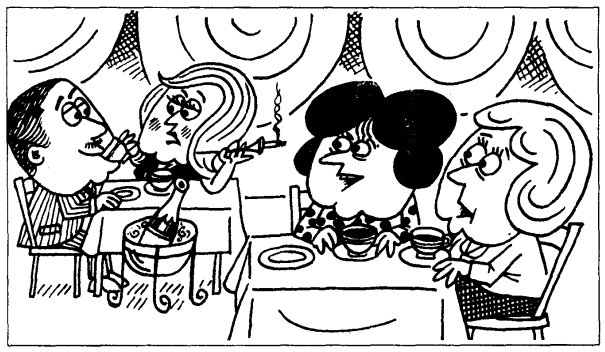
✨单词
推测的表达方式
从127~132课将会学习不同的推测表达方式
⚡本课重点
must be:表示根据已经了解到的信息,对当前状况进行肯定的推测,概率接近100%,意思为「一定是」
must be+adj./n.e.g. He must be busy.、He must be a teacher.
must be+V.inge.g. You must be joking.、You must be having a bath.
must be+宾语从句e.g. You must be the boyfriend of that girl.
can't be:表示根据已经了解到的信息,对当前状况进行否定的推测,概率接近0%,意思为「一定不是」
can't be+adj./n.e.g. It can't be true.、He can't be a teacher.
can't be+V.inge.g. They can't be working.
can't+宾语从句e.g. You can't be the boyfriend of that girl.
not more than:表示「不超过」
Lesson 129~130
✨课文

✨单词
⚡本课重点
must have been:表示根据已经了解到的信息,对过去的状况进行肯定的推测,概率接近100%,意思为「(当时)一定是」,翻译时,根据上下文来决定是否加当时
must have+V.pp.e.g. You must have eaten my biscuits.
must have been+adj./n.e.g. He must have been busy.、He must have been a teacher.
must have been+V.inge.g. They must have been having a party.
must have been+宾语从句e.g. You must have been the boyfriend of that girl.
can't have been:表示根据已经了解到的信息,对过去的状况进行否定的推测,概率接近0%,意思为「(当时)一定不是」,翻译时,根据上下文来决定是否加当时
can't have+V.pp.e.g. You can't have eaten my biscuits.
can't have been+adj./n.e.g. He can't have been busy.、He can't have been a teacher.
can't have been+V.inge.g. They can't have been having a party.
can't have been+宾语从句e.g. You can't have been the boyfriend of that girl.
注意,这里的have been跟现在完成时没有任何关系,英语语言习惯就这样,就是个固定搭配
do you think:用在特殊疑问句中的插入语,用来征询见解或表达看法。插入语可以位于句尾或句中,有时也可以出现在一般疑问句中
- e.g. Will he be late for school, do you think?
must have been连读:发音为/mʌst hæv biːn/,h和v不发音
can't have been连读:发音为/kɑːnt hæv biːn/,h和v不发音
Lesson 131~132
✨课文

✨单词
⚡本课重点
may和might:表示对过去、现在、将来的推测,概率不高,50%左右,意思为「可能、也许」。其否定形式为在may/might的后面直接加not
虽然might本身是may的过去式,但在现代英语使用习惯中,might同样能用来对当前或将来状况进行推测,只是其概率比may稍低,并且当情况是虚拟的时候只能用might。
对现在或将来推测
may/might (not)+V.e.g. He may know the answer.、We might not go anywhere.
may/might (not) be+adj./n.e.g. They may be busy.、She might not be a teacher.
may/might (not) be+V.inge.g. You may not be joking.、They might be having lunch.
对过去推测
may/might (not) have+V.pp.e.g. He may have known the answer.、We might not have gone anywhere.
may/might (not) have been+adj./n.e.g. They may not have been busy.、She might have been a teacher.
may/might (not) have been+V.inge.g. You may have been joking.、They might not have been having lunch.
might have been连读:发音为/ˈmaɪt həv biːn/,h不发音
Lesson 133~134
✨课文
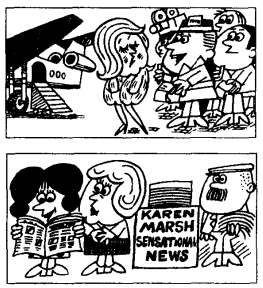
✨单词
直接引语变间接引语
⚡本课重点
在之前的75~76课和99~100课中,主要学习了宾语从句在主句是一般现在时的用法,这时候的从句可以是任何时态
当主句是一般过去时情况下,间接引语通常需要改变人称和时态,这是因为原话进行的时间永远都是早于转述的时间
直接引语变间接引语
| 人称变化 | 说明 | 直接引语 | 间接引语 | ||
|---|---|---|---|---|---|
| 时态 | 例句 | 时态 | 例句 | ||
| 一随主 | 引号内第一人称变间接引语后,与主句主语的人称保持一致 | 一般现在时 | She said, "I like English." | 一般过去时 | She said she liked English. |
| 现在进行时 | She said, "I am studying English." | 过去进行时 | She said she was studying English. | ||
| 现在完成时 | They said, "We have finished the work." | 过去完成时 | They said they had finished the work. | ||
| 一般过去时 | He said to her, "I waited for an hour." | He told her that he had waited for an hour." | |||
| 一般将来时 | She said, "I am going to study English." | 过去将来时 | She said she was going to study English. | ||
| 二随宾 | 引号内第二人称变间接引语后,与主句宾语的人称保持一致,如果主句没有宾语,则可以用第一人称 | 一般现在时 | Tom said to Lucy, "You are so cute." | 一般过去时 | Tom told Lucy she was so cute. |
| 现在进行时 | The policeman said, "You are driving too fast." | 过去进行时 | The policeman said I was driving too fast. | ||
| 现在完成时 | She said to him, "You have finished your job." | 过去完成时 | She told him that he had finished his job. | ||
| 一般过去时 | She said to him, "You did very well." | She told him that he had done very well. | |||
| 一般将来时 | She said to me, "I am going to buy you an ice cream." | 过去将来时 | She told me that she was going to buy me an ice cream. | ||
| 第三人称不更新 | 引号内第三人称变间接引语后,人称保持不变 | 一般现在时 | She said to me, "Tom is the winner." | 一般过去时 | She told me that Tom was the winner. |
| 现在进行时 | He said, "She is waiting for a bus." | 过去进行时 | He said that she was waiting for a bus. | ||
| 现在完成时 | He said to me, "They have already retired." | 过去完成时 | He told me that they had already retired. | ||
| 一般过去时 | She said to me, "Jack bought a new car." | She told me that Jack had bought a new car. | |||
| 一般将来时 | She said to me, "They are going to move into a new flat." | 过去将来时 | She told me that they were going to move into a new flat. | ||
Lesson 135~136
✨课文
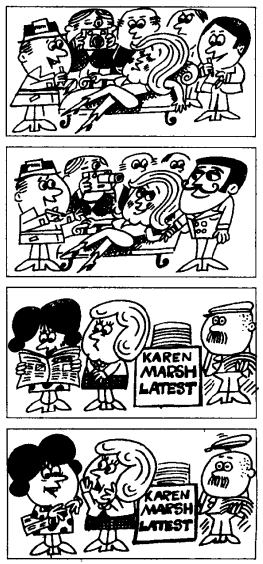
✨单词
⚡本课重点
let:表示「允许、让」。它与一般动词不同,使用结构为 let+名词/代词+V.,其中V表示不带to的动词不定式
- e.g. She lets her son play in the garden.
introduce A to B:表示「把A介绍给B」
- e.g. He introduces me to his friend.
当主句是一般过去时情况下,间接引语中的情态动词要用过去式
| 人称变化 | 说明 | 直接引语 | 间接引语 | ||||
|---|---|---|---|---|---|---|---|
| 时态 | 情态动词 | 例句 | 时态 | 情态动词 | 例句 | ||
| 一随主 | 引号内第一人称变间接引语后,与主句主语的人称保持一致 | 一般现在时 | can | She said, "I can speak English." | 一般过去时 | could | She said she could speak English. |
| will | He said, "I will do it myself." | would | He said he would do it himself. | ||||
| may | He said, "I may go with you." | might | He said he might go with me. | ||||
| 二随宾 | 引号内第二人称变间接引语后,与主句宾语的人称保持一致,如果主句没有宾语,则可以用第一人称 | 一般现在时 | can | His mother said, "You can watch television." | 一般过去时 | could | His mother said that he could watch television. |
| will | He said, "You will win." | would | He said that I would win. | ||||
| may | He said to her, "You may be right." | might | He told her that she might be right. | ||||
| 第三人称不更新 | 引号内第三人称变间接引语后,人称保持不变 | 一般现在时 | can | She said to me, "Tom can swim." | 一般过去时 | could | She told me that Tom could swim. |
| will | She said, "They will go to London next week." | would | She said that they would go to London next week. | ||||
| may | He said to me, "She may be 18." | might | He told me that she might be 18. | ||||
Lesson 137~138
✨课文
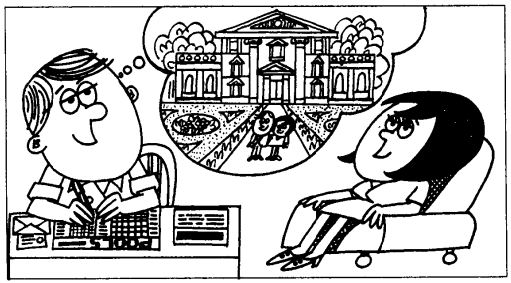
✨单词
条件从句
⚡本课重点
if:单词本义「如果、是否」,通常用来引导一个从句
条件从句:如果我们认为将来的事件是可能发生的,就可以用if条件从句去描述将会发生什么事或不会发生什么事。其基本结构为 if+一般现在时+将来时/情态助动词。也就是主句用将来时或情态动词,从句用一般现在时,归纳为四字诀「主将从现」
如果if条件从句是前半句的话,常常需要用逗号分隔;而如果是后半句的话则不需要用逗号分隔
- If it rains tomorrow, we won't go to the seaside.
- I'll wash the dishes if you cook dinner.
- If you're have enough money, you can buy a big house.
Lesson 139~140
✨课文
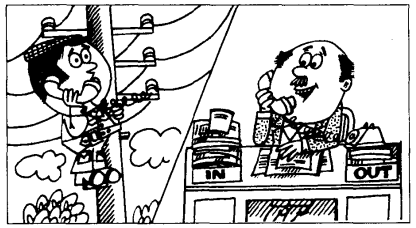
✨单词
疑问句宾语从句
⚡本课重点
在之前的75~76课、99~100课和133~136课中所学的宾语从句全部都是陈述句做宾语从句,本节课将会学习疑问句做宾语从句的相关知识
| 连接词 | 宾语从句 | |
|---|---|---|
| 主句 | that,可省略 | 陈述句 (肯&否) |
if,不可省略 | 一般疑问句 (陈述语序) | |
特殊疑问词,不可省略 | 特殊疑问句 (陈述语序) |
一般疑问句宾语从句:由 if引导的陈述语序的一般疑问句作宾语从句,其结构为 主句+if+宾从(一般疑问句)
看下面几个例子,掌握一般疑问句宾语从句的转化步骤
e.g. I want to know ...
- ①一般疑问句:Is she a teacher?
- ②把一般疑问句转为陈述语序:she is a teacher.
- ③给主句添加连接词
if用来引导第二步的陈述语序:I want to know if she is a teacher.
- ①一般疑问句:Does she often go shopping?
- ②把一般疑问句转为陈述语序:she often goes shopping.
- ③给主句添加连接词
if用来引导第二步的陈述语序:I want to know if she often goes shopping.
- ①一般疑问句:Have you lost your key?
- ②把一般疑问句转为陈述语序:you have lost your key.
- ③给主句添加连接词
if用来引导第二步的陈述语序:I want to know if you have lost your key.
- ①一般疑问句:Will you go to school tomorrow?
- ②把一般疑问句转为陈述语序:you will go to school tomorrow.
- ③给主句添加连接词
if用来引导第二步的陈述语序:I want to know if you will go to school tomorrow.
特殊疑问句宾语从句:由 特殊疑问词引导的陈述语序的特殊疑问句作宾语从句,其结构为 主句+特殊疑问词+宾从(特殊疑问句)
看下面几个例子,掌握特殊疑问句宾语从句的转化步骤
e.g. He wants to know ...
- ①特殊疑问句:What's your job?
- ②句首的特殊疑词将作为引导词维持不动,把其后面的部分转为陈述语序,人称代词根据语义进行调整:what my job is.
- ③将第二步得到的以特殊疑问词引导的陈述语序拼接到主句上:He wants to know what my job is.
- ①特殊疑问句:When is she going to have a bath?
- ②句首的特殊疑词将作为引导词维持不动,把其后面的部分转为陈述语序:when she is going to have a bath.
- ③将第二步得到的以特殊疑问词引导的陈述语序拼接到主句上:He wants to know when she is going to have a bath.
- ①特殊疑问句:Why does she want to see you?
- ②句首的特殊疑词将作为引导词维持不动,把其后面的部分转为陈述语序,人称代词根据语义进行调整:why she wants to see me.
- ③将第二步得到的以特殊疑问词引导的陈述语序拼接到主句上:He wants to know why she wants to see me.
- ①特殊疑问句:Why didn't you clean the car?
- ②句首的特殊疑词将作为引导词维持不动,把其后面的部分转为陈述语序,人称代词根据语义进行调整:why I didn't clean the car.
- ③将第二步得到的以特殊疑问词引导的陈述语序拼接到主句上:He wants to know why I didn't clean the car.
- ①特殊疑问句:How long have you lived in Nanning?
- ②句首的特殊疑词将作为引导词维持不动,把其后面的部分转为陈述语序:how long I have lived in Nanning.
- ③将第二步得到的以特殊疑问词引导的陈述语序拼接到主句上:He wants to know how long I have lived in Nanning.
Lesson 141~142
✨课文
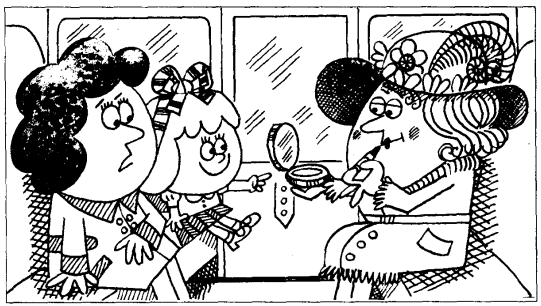
✨单词
被动语态
英语的被动语态要比汉语的简单:因为汉语中并没有限定哪些动词只能用来表示被动,相反的则是所有动词都可以表示主动或被动,这取决于你从什么角度去看待这个动词
举个栗子:饭做好了。短短四个字就能表达清楚意思,既省略了主语,也没有出现关键字眼被,这时就很难区分这是主动语态还是被动语态了,只能靠听话人自己猜。如果从说话人的角度出发,那么很大概率说话人就是做饭这一动作的主语,这时就是汉语中的主动语态。而如果你的关注点在饭,那么这时就是被动语态,此时饭作为主语,它是可能是被说话人或其他某个人给做出来的,至于是谁做的并不在乎
⚡本课重点
英语动词也有主动语态和被动语态之分。在主动句中,动词的主语是执行动作的人或物;而在被动句中,主语则是动作的承受者。换言之,就是把主动句中的「直接宾语」变成了「主语」
主动语态:这里特指的是主谓宾结构,即 主语+V+宾语,其中的动词基本都是及物动词,因为其后面必须跟宾语
被动语态:当不知道或没有必要指出动作的执行者时,常用被动语态,把主动句中的「直接宾语」转为「主语」即可,其核心结构为 be+V.pp.,过去分词不一定指过去。被动语态可以避免用不明确的词作主语,或是将重点放在事件本身而不是造成该事件的人或物上,强调的是动作的承受者
肯定句:
主语+be+V.pp.(+其他)e.g. My phone was made in China.
否定句:只需在
be的后面加上not即可。主语+be+not+V.pp.(+其他)e.g. My phone wasn’t made in China.
一般疑问句:只需将
be提到句首(主语前面)即可。Be+主语+V.pp.(+其他)e.g. Was your phone made in China?
特殊疑问句:在一般疑问句的句首加上特殊疑问词并去掉答案。
特殊疑问词+be+主语+V.pp.(+其他)e.g. My phone was made in China. => Was your phone made in China? => Where was your phone made?
先把陈述句中的
be动词提到句首得到一般疑问句,再用where对一般疑问句中的答案in China进行提问,并将where提到句首
八种常见的被动语态结构
| 时态 | 结构 | 例句 |
|---|---|---|
| 一般现在时 | am/is/are+V.pp. | The room is aired regularly. |
| 一般过去时 | was/were+V.pp. | This house was built a hundred years ago. |
| 一般将来时 | will/shall+be+V.pp. | The floor will be swept soon. |
| 现在进行时 | am/is/are+being+V.pp. | The rooms are being painted. |
| 过去进行时 | was/were+being+V.pp. | The house was being built at this time last year. |
| 现在完成时 | have/has+been+V.pp. | The basket has already been emptied. |
| 过去完成时 | had+been+V.pp. | He had been considered to be a greater leader. |
| 情态动词 | 情态动词+be+V.pp. | Your room must be cleaned every day. |
Lesson 143~144
✨课文
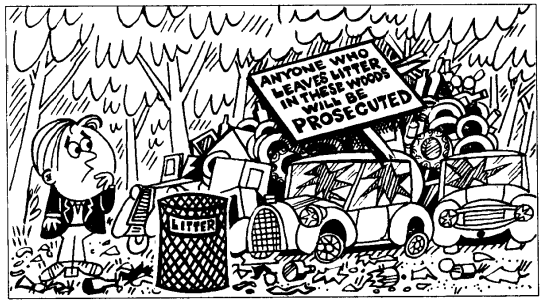
✨单词